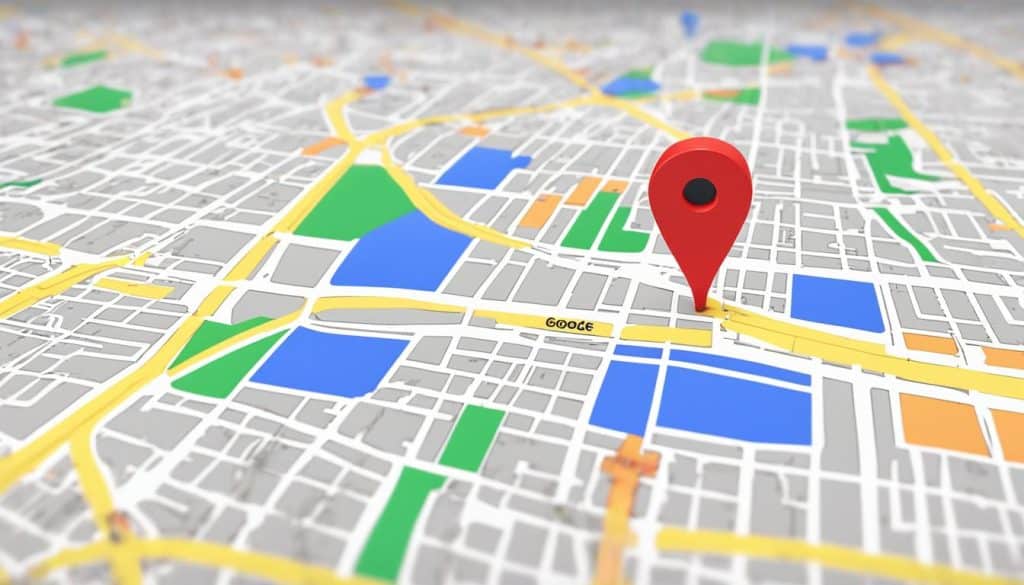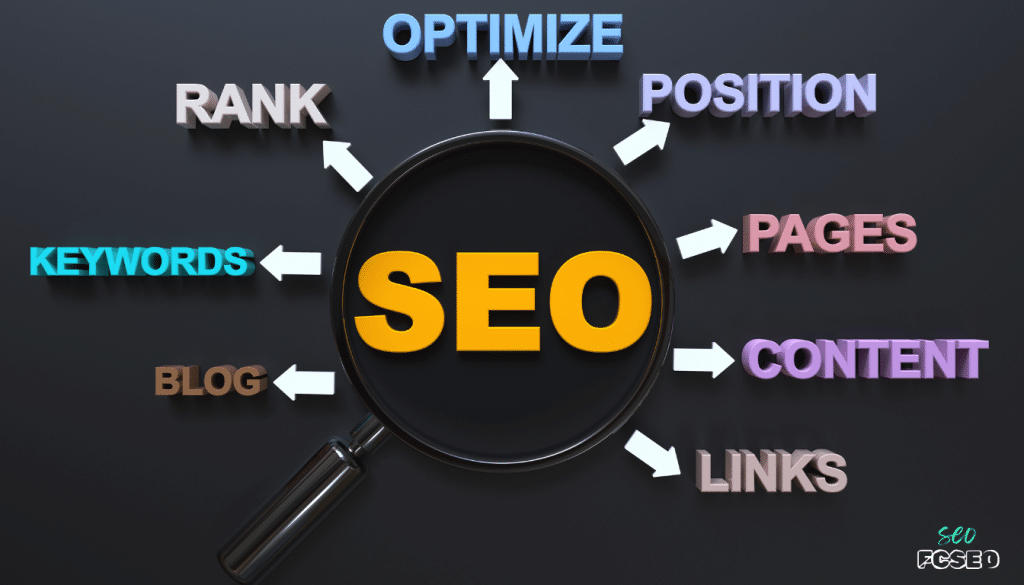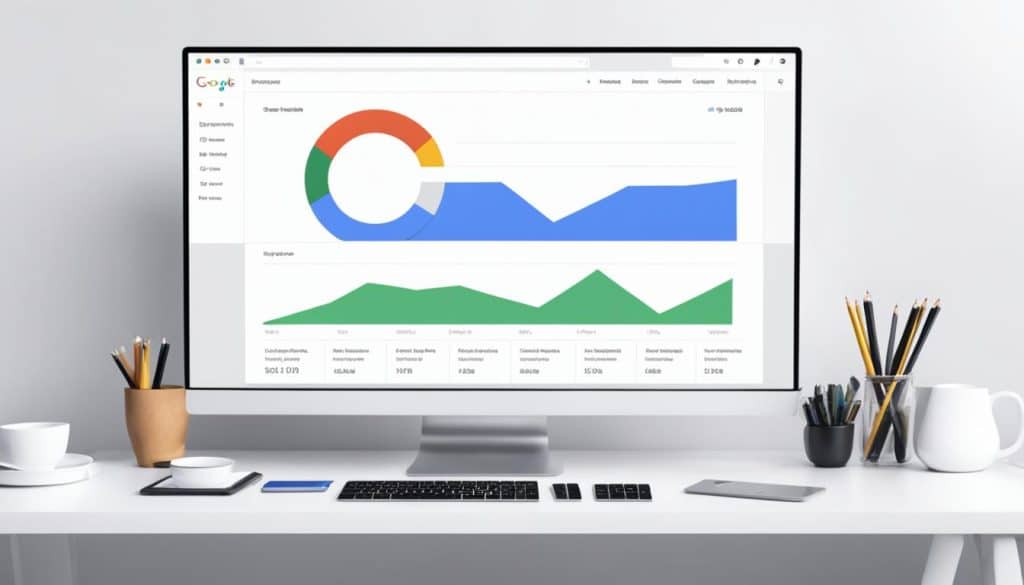Starting your journey in SEO can feel overwhelming, especially when Google uses over 200 factors to decide how content ranks in search results. But don’t worry—by focusing on the basics, you can build a solid foundation that sets you on the path to becoming an SEO pro.
To make things easier, we’ve crafted the ultimate guide to SEO tips for beginners in 2025. Whether you’re just starting or looking to refresh your knowledge, these tips will give your strategy a strong boost.
Let’s dive into the essentials of SEO with these 21 best tips for 2025 that anyone can understand and apply!
21 SEO Tips for Beginners
- 1. Claim (and complete) your Google Business Profile
- 2. Target long-tail keywords vs. short-tail keywords
- 3. Understand the 3 different search intents
- 4. Research relevant keywords with the right tools
- 5. Choose core (and related) keywords for every page
- 6. Optimize your title tags — and make them spicy
- 7. Create informative and optimized meta descriptions
- 8. Use keywords in headings and paragraphs
- 9. Write for humans first, then search engines
- 10. Optimize content for featured snippets
- 11. Go ahead and link to other sites
- 12. Develop longer content
- 13. Include keywords in URLs, but keep URLs short
- 14. Establish a site structure now
- 15. Link your site to Google Search Console
- 16. Earn qualified backlinks from reputable sites
- 17. Find and research your top competitors
- 18. Focus on E-E-A-T in your content
- 19. Create topic clusters
- 20. Target “People Also Ask” with FAQ sections
- 21. Create a schedule for updating content and preventing decay
1. Claim (and complete) your Google Business Profile
The first basic SEO tip is to claim your Google Business Profile.
A Google Business Profile is a free listing that shows up in Google search results when people look for your business or related services. You’ve likely seen these profiles when searching for a company, looking for a restaurant, or finding directions to a specific place.

Claiming (or creating) your Google Business Profile lets you provide both Google and potential customers with important information about your business. It’s quick and easy to set up, so make sure this is one of the first tasks on your SEO checklist.
Once you’ve claimed your profile, you can improve it by adding the following details:
- Name, address, and phone number (NAP)
- Business hours
- Website link
- Relevant categories, like “Restaurant”
- A brief description of your business and what makes it unique
- Photos of your business
If you have any upcoming events, you can add those to your Google Business Profile as well.
For the best results, keep your profile active and continually optimize it. Respond to customer reviews, post updates about your business, enable text messaging, update hours for holidays, and more.
2. Target long-tail keywords vs. short-tail keywords
Keywords are a crucial element of search engine optimization (SEO), and they’re also one of the easiest SEO tips to implement.
To help people find your website and improve your content’s ranking in search results, you need to identify relevant keywords, understand the search intent behind them, and include them in your meta tags and content.
Before diving into keyword research, let’s go over the difference between long-tail and short-tail keywords:
- Long-tail keywords: These are longer phrases, usually three to four words, such as “how to roll sushi.” They are more specific to the user’s intent and help with long-tail SEO.
- Short-tail keywords: These are shorter, one- to two-word phrases like “sushi rolls.” They are broader and can lead to a variety of search results.
If you’re just starting with SEO, it’s best to focus on long-tail keywords for your research. Long-tail keywords tend to have less competition than short-tail ones, making it easier to rank your content.

Short-tail keywords are like Olympic athletes, while long-tail keywords are more like high school athletes. If your website isn’t yet at an “Olympic level” of authority and optimization, ranking at the top for short-tail keywords will be a challenge. However, long-tail keywords provide a great starting point, as they offer less competition and are more achievable for a website just starting out.
3. Understand the 3 different search intents
Another way to boost your SEO is by understanding the three types of user intent, which are:
- Navigational: The user wants to visit a specific website, like Apple or Facebook.
- Informational: The user is seeking information about a topic, like how to roll sushi or the different types of sushi.
- Transactional: The user intends to purchase a product, like a sushi roller or an order of sushi.
Understanding these types of intent is crucial because it will help you decide which keywords to target.
For example, a service or product page for a tech company should focus on transactional keywords, while a blog post should target informational keywords. By searching potential keywords on Google before creating and optimizing your content, you can better understand the search intent based on the type of results that appear.
4. Research relevant keywords with the right tools
The fourth tip on our list of simple SEO strategies is to use the right tools to find relevant keywords for your website. Once you’ve identified the keywords you want to target, you can start researching them using tools like these:
| Price Factor | Cost |
|---|---|
| Google Autocomplete | Free |
| KeywordTool | $89-$199 / mo. |
| Google Keyword Planner | Free |
| KeywordsFX | Free |
| AnswerThePublic | $0-$99 / mo. |
As an SEO beginner, there are plenty of free tools available, so feel free to try out different ones to see which works best for you.
As your SEO efforts grow, you might consider investing in a paid tool, such as KeywordTool. You could also look into an SEO toolkit like Ahrefs, which provides features for keyword research, competitor analysis, backlink checking, and more.
5. Choose core (and related) keywords for every page
Your target keyword alone isn’t enough, you also need supporting keywords to give it context.
For instance, if you have a page about rolling sushi, “how to roll sushi” might be your main keyword because it has a high search volume. However, you should also gather two or three related keywords through keyword research tools.
If you’re using Google for keyword research, you can check the “Searches related to [keyword]” section at the bottom of the search results page to find similar keywords. Alternatively, the autocomplete feature in Google can help you discover additional relevant keywords.

Next, you can enter those keywords into Google Keyword Planner to gather important data, such as:
- Search volume: How often people search for that keyword
- Competition: How many other websites are targeting that keyword
- Bids: The average cost-per-click (CPC) if you’re running paid ads for that keyword
Once you’ve compiled a list of relevant keywords, you can start optimizing your content. To make the process easier, create a Google Sheet where you list your pages along with their core and related keywords. This sheet will serve as a useful reference for you and your team.
If you’re looking for a free keyword research tool to get started, check out our tool — KeywordsFX!
6. Optimize your title tags — and make them spicy
Your title tag is like the first impression you make when meeting someone new — it’s important and leaves a lasting impact. This first impression determines whether someone will click on your page or choose another, which is why it’s crucial to have titles that are informative, optimized, and engaging.
So, what makes a title informative, optimized, and spicy?
- Informative: Your title clearly explains what your page is about, without using clickbait.
- Optimized: Your title includes your main keyword and is 55 characters or fewer.
- Spicy: Your title sparks curiosity and excitement, encouraging readers to click.
Remember, your title tag appears in search results, not on your actual webpage.
If you prefer, you can create a separate on-page title using your H1 tag for your content. For example, you might use the title tag “How to Make Your Own Sushi Rolls (Infographic) | Allrecipes” for SEO purposes, but have the H1 tag on the page be “How to Make Sushi”. This allows you to optimize for search engines while keeping the on-page title simple and user-friendly.

Make sure your title tag and H1 tag are aligned with each other. This consistency will help improve your SEO.
If users click on your site and then land on a page where the title seems unrelated to the title tag, they are more likely to bounce back to the search results. From Google’s perspective, this indicates that your content may not be relevant to the user’s search, which can negatively affect your rankings.
To get started with crafting your title tags, try using these helpful tools:
- CoSchedule Headline Analyzer
- Sumo List of Power Words
- Moz Title Tag Length Checker
Remember, you can always update your title tag later. So, feel free to create a list of potential titles and test which one works best for your page.
7. Create informative and optimized meta descriptions
If you’ve checked out some beginner guides on on-page SEO, you’ve likely come across meta descriptions, which appear below the title tag in search results. While meta descriptions don’t directly impact rankings like title tags do, they are still an important part of SEO.
Your meta description provides a summary of your page’s content to users. If you don’t write one, Google will automatically pull text from your page to create it, but this doesn’t always result in the most useful or relevant description for the user.
You want to include your keywords (and even related keywords) in your meta descriptions. If someone searches for a keyword that appears in your meta description, Google will bold that keyword. This feature will make your page seem more relevant, which can result in a click.
Now, it’s important to know that Google will often rewrite your meta description.

Even if you write a meta description that clearly summarizes your content and stays within the character limit (up to 155 characters), Google may still choose to rewrite it.
However, it’s still important to write your own meta description. If Google does use it, your core and possibly related keywords will appear in the description. When users see bolded keywords, it can encourage them to click on your site, which sends a positive signal to Google about your content’s relevance to the search.
8. Use keywords in headings and paragraphs
Another essential SEO tip for beginners is to include keywords in your headings and content.
Although Google would prefer not to rely solely on keywords, they are still a key part of its ranking algorithm. Keywords help Google understand what a piece of content is about and whether it matches a specific topic or query. That’s why it’s important to use your keywords throughout your content, in addition to your title tags and meta descriptions.
You should include your core and related keywords in two main areas:
- Headings (like H1, H2, H3, etc.)
- Paragraphs, lists, tables, and other content sections
Try to place your core keyword in the first paragraph, or at least within the first 100 words of your content.
Using headings like H2 to break up your content helps optimize your page and improves the user experience. Headings make it easier for visitors to skim and read your content. They also assist both users and search engine crawlers in understanding and indexing your content more effectively.
Depending on your related keywords, you can also use headings to target those keywords.
In the above example, for instance, the page targets the following core and related keywords:
- How to roll sushi
- How to roll hosomaki
- How to roll futomaki
- How to roll uramaki
- How to roll temaki
This approach allows the website to target its keywords, organize its content, and provide its readers with a skimmable experience. They can find what they need on the page fast, which makes them less likely to bounce back to the search results — a positive signal to Google.
9. Write for humans first, then search engines
For many SEO beginners, it’s tempting to create and write content for search engines versus users. This approach can result in keyword-stuffed pages and title tags, as well as a tone of voice that seems robotic or unrelatable to users.
Put your audience first when creating and writing your content.
Think about what they’re looking to find, solve, or learn with your content. Then, consider how you could make learning, understanding, or resolving the problem even easier with your content structure, page design, or multimedia.
For example, this page about how to roll sushi uses images to help users learn:

From a user’s perspective, this approach makes perfect sense. If someone tried to explain how to roll sushi using just text, it would be confusing and make users uncertain at every step.
Writing for your audience is crucial because, through SEO, your goal is to drive revenue. You want users to find your site through search results, but you also need to convince them that your content is the best solution. If you focus only on writing for search engines, you miss out on attracting genuine leads and customers.
Prioritize your audience first, and then focus on optimization, to get the most value from your SEO efforts.
10. Optimize content for featured snippets
A free SEO tip that can significantly impact your strategy is targeting featured snippets.
Featured snippets appear at the very top of certain search results, in a spot known as Position Zero. This prime position places your content above all other pages, which can help your site attract more clicks and drive additional traffic.
When researching your core and related keywords, check if the search results show a featured snippet. If they do, take note so you can optimize your content to target that featured snippet.
Here are some SEO beginner tips to help you claim featured snippets for your website:
- Answer featured snippets with tables, lists, or 46- to 84-word paragraphs.
- Expand lists to eight or more items (if it’s useful to readers) to encourage clicks.
- Create tables with three or more rows (if helpful to readers) to drive clicks.
- Use dedicated headings that directly answer the featured snippet question, like “Is sushi healthy?”
- Include the core or related keyword that triggers the featured snippet in your headings.
Keep in mind that your content will likely need to rank on page one to become a featured snippet. While it’s possible for a page on the second search results page to earn a featured snippet, it’s very rare. Most featured snippets come from the top five pages.
11. Go ahead and link to other sites
Links are a crucial part of SEO — in fact, they’re one of the main factors Google uses to determine rankings.
While you should avoid linking to competitor sites or linking away from your own site on product or service pages, you shouldn’t completely avoid external links either.
For Google, both internal and external (outbound) links indicate that your website is healthy and trustworthy.

Feel free to link to other websites when creating informational content for your audience. Use links to support and enhance your content, such as by referencing a statistic, study, guide, or another helpful resource.
When linking to external sites, make sure to choose reputable, high-quality websites.
Linking to a shady or unreliable site can damage your brand’s reputation and make Google question the trustworthiness of your site. To keep both your readers and your brand safe, only link to websites you’d feel comfortable recommending to someone you trust like your grandma.
12. Develop longer content
Longer content, also known as long-form content, is a great way to provide a better experience for your readers. In general, long-form content tends to perform better than shorter content in terms of search rankings and social shares. That’s why your SEO strategy should consider incorporating long-form content.
For context, long-form content is typically 1200 words or more, while short-form content is around 500 to 800 words.
With long-form content, you can offer readers a comprehensive guide on a topic. For example, if they’re researching the different types of sushi, they might have follow-up questions that you can address, like which sushi is the healthiest, where to find various types, and how much each type costs.
Remember, always write for your audience first, then optimize for SEO. In some cases, shorter content may still rank well. That’s why, before creating your content, it’s important to check the search engine results pages (SERPs) to see what’s currently ranking.
Creating long-form content can be challenging, especially if you have a smaller in-house SEO team. This is where professional SEO services from an agency like FCSEO can help! Our team of in-house copywriters can create, edit, and implement optimized content for your site, all without extra effort on your part!
13. Include keywords in URLs, but keep URLs short
URLs are another important SEO tip for beginners.
A short, descriptive, and well-organized URL is helpful for both search engines and users. It gives web crawlers more context about your content and site structure, while also helping users understand where they are on your website.
When creating SEO-friendly URLs, follow these tips:
- Include your core keyword
- Keep the URL to five words or fewer, if possible
- Use hyphens (-) to separate words
- Keep the URL in lowercase
- Avoid using apostrophes (‘) and hashtags (#)
Here are examples of good and bad URLs:
| Bad URL | Cost |
|---|---|
| example.com/blog/12345.html | example.com/blog/how-to-roll-sushi.html |
| example.com/sushi-rollers-2123123213.html | example.com/sushi-rollers.html |
| example.com/blog/Types-of-Sushi.html | example.com/blog/types-of-sushi.html |
Optimizing your URLs can make a big difference in your user experience and even rankings.
14. Establish a site structure now
When discussing the basics of SEO, it’s important to address site structure.
Your site structure, also known as information architecture, refers to how your website is organized. For example, which pages are included in your site’s navigation? How do you categorize different types of content, such as blogs, products, or resources? And how does all your content connect with each other?
While it may seem like a lot to consider, a well-organized site structure is crucial for SEO.

Start brainstorming how to structure your site (or revise its current structure) with these tips:
- Define your website’s hierarchy: Your site’s hierarchy is its organization, similar to a family tree. For example, if your homepage is the “parent,” it might have several “children” pages like /products/, /about/, or /blog/, and those pages could have their own subpages, like /products/sushi-rollers/.
- Create your header and footer pages: The header and footer of your website help both users and search engines navigate your content. You’ll want to decide which key pages or links should appear in these areas. Typically, these will be your most important pages or sections of your site.
- Use breadcrumb menus: A breadcrumb menu makes it easier for users to explore your site. It also serves as structured data that can enhance how your site appears in search results. Work with your design team to include breadcrumb menus on your pages.
While building or revising your site structure requires collaboration with your design and development team, it’s a critical element of SEO, even for beginners. It’s something you should think about now and incorporate into your overall SEO strategy. If you’re working with a professional SEO service provider, they can assist you with this as well!
15. Link your site to Google Search Console
Google Search Console is an essential tool for any SEO toolkit.
This free platform, provided by Google, gives you immediate insight into your site’s performance in Google search results. It also shows you how Google views your site and offers actionable suggestions to improve your SEO.
Here’s what you can check in Google Search Console:
- Page impressions and clicks from different search queries
- Crawl errors
- Mobile-friendly issues
- Rich results markup
- Page indexing
- Page rankings
- Page speed ratings
- And much more
You can also submit URLs or even your entire site to Google Search Console for indexing.
With all the valuable features and insights it provides, every SEO should use Google Search Console. To get started, follow Google’s “Get Started with Search Console” guide to set it up for your website.
16. Earn qualified backlinks from reputable sites
Our next free SEO tip is about earning backlinks for your website.
Backlinks are links from other websites that point to yours, and they’re crucial for SEO because they help build your site’s credibility. When credible sites link to your content, Google sees that as a signal of trust and may rank your website higher.
As an SEO beginner, the best way to earn backlinks is by creating high-quality content and valuable pages on your site. This way, people will naturally want to link to your website.
Other ways to earn backlinks include:
- Guest posting: Write content for another website’s blog or newsletter, and include a link to your site or encourage readers to learn more from you.
- Asking for links: You can reach out to other sites and ask them to link to your content, as long as it’s relevant to their niche.
- Replacing broken links: If you find a site with outdated statistics or broken links, contact them and suggest replacing the broken link with a link to your content. This benefits both parties by helping them maintain good SEO.
Be cautious, though — never buy or ask for backlinks from unreliable websites. These links can harm your rankings and may even get your site banned from search results.
17. Find and research your top competitors
To rank well in the SERPs (Search Engine Results Pages), it’s important to understand who you’re competing against.
Your search competition isn’t always your direct business competitor. If local competitors don’t have a strong online presence, they won’t be as much of a threat. Instead, you need to look at who and what is currently ranking for the keywords you’re targeting.
For example, if you own a sushi restaurant, you should check out how other local restaurants are ranking and analyze their strategies.
From these results, you can visit the websites of Miyako and Yokohama to examine the type of content they post and how they approach SEO. This will give you insights into their strategies and help you identify areas where you can improve or differentiate your own content.
18. Focus on E-E-A-T in your content
E-E-A-T stands for Experience, Expertise, Authoritativeness, and Trustworthiness. This set of guidelines is used by Google’s raters to assess content creators online.
Although E-E-A-T isn’t an official ranking factor, it’s still crucial to keep in mind when creating content. In many cases, focusing on E-E-A-T will naturally help your content perform well in search rankings.
Make sure you’re demonstrating to both Google and your users why you’re a credible source. Consider the following:
- How long have you been in business?
- What experience do you have in your field?
- Does your service live up to the claims made on your website?
This free SEO tip can have a significant impact on how your content ranks.
19. Create topic clusters
One of the best SEO tips for creating content is to establish topic clusters. Topic clusters are groups of related content that help you organize and structure your website’s pages.
For example, if your main topic is local restaurants, you might have separate pages for breweries, coffee shops, and Italian restaurants. From there, you could create additional content like “Top 5 Breweries in the Area,” “Must-Have Menu Items at Coffee Shops,” and “Best Italian Restaurants for a Romantic Dinner.”
The goal of topic clusters is to create content that answers a variety of related search queries without being repetitive. This approach improves the structure of your site and helps search engines understand the relevance of your pages.
20. Target “People Also Ask” with FAQ sections
If you want to answer search intent directly, the People Also Ask section is a great place to start.
For most searches, you will find this section with related questions that people ask:

You can take these common questions and create a FAQ section on related pages, answering them directly. This not only adds valuable content to your pages but also addresses actual user searches.
This simple SEO tip provides you with more content ideas and helps you target featured snippets, all at once.
21. Create a schedule for updating content and preventing decay
Some content naturally becomes outdated over time, depending on the topic. Even this list of SEO tips needs to be updated regularly to stay relevant! That’s why it’s important to set up a schedule for creating and updating content to avoid content decay and improve your rankings.
For example, you could set a reminder to update your statistics pages at the end of each year to ensure they reflect the most current data.
Having a schedule for updating your content makes learning SEO easier. There’s a lot to cover, but planning when and what to write can make a huge difference in your overall content strategy.
Want more tips? Connect with an experienced SEO consultant!
Ready to get started with these SEO tips for beginners?
If you’re still feeling unsure or overwhelmed, FCSEO is here to help.
Our award-winning SEO agency offers SEO consulting services that connect you with an experienced SEO specialist. We also provide full-service SEO solutions if you’re looking for a long-term partner to lead and manage your company’s SEO strategy.
Contact us online today or call us at 844-997-4736 to learn how our customized strategies can help grow your business!



